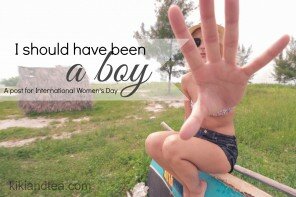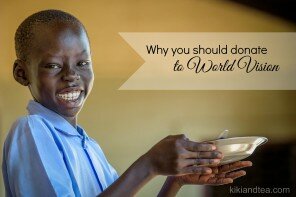
Sitting in a doctor’s waiting room a few years ago, director Rebecca Barry flicked through a copy of Marie Claire magazine. In between $10,000 dresses and $300 face creams, the magazine publishes some serious journalism, and this issue contained an article about the lives of girls around the world that shocked her. A decade into the 21st century, girls are still getting married before their 16th birthdays, birthing children while they are still children themselves, and suffering abuse at higher rates than any other demographic.
After surviving a tsunami in Samoa in 2009, Rebecca was spurred into action, going from a life as a jobbing TV director to making this film, which was a labour of love. Using a combination of crowd funding and philanthropy, she and her crew managed to scrape together a budget and set off to find six amazing girls to share their stories. There’s Aziza studying hard to get into university in Afghanistan, Breani living in the projects in New York and making beautiful music, Manu preparing to give birth to her first child in Papua New Guinea, Habiba getting ready for her wedding in Cameroon, Katie struggling with mental illness in her comfortable suburb in Sydney and Kimsey raising a child, dealing with an abusive family life and selling sex in Cambodia.
My friend Katie and I caught a screening in Canberra where we met Rebecca, who was kind enough to chat with us on our movie podcast. She talked about the journey of making this film and the life-changing experience of meeting these young women. I wanted to share some of what she said with KiKi &Tea readers, and to recommend getting along to a screening if you can. Apart from being a beautiful, eye-opening piece of cinema, the story behind the film is an inspiration to any filmmaker with small resources and a big ambition.
On how she found some of the girls:
“The film was funded philanthropically so we had some help from different philanthropists and organisations. Plan Australia helped us with connections in Cameroon. Save the Children helped us in Afghanistan. In Papua New Guinea we just went and hung out in different maternity wards and ante-natal clinics until we found Manu.”
On empowering the girls to tell their own stories:
“When we did find the girls we were hoping to film with, we would go through quite a rigorous process of consent and talking with the family and did they understand what was involved and being really honest about what it means to be a part of a film and also make sure that they felt empowered by being a part of the story…I really wanted for the girls’ stories to be testimony and for them to feel like it was them telling us their story not me going in and filtering through a story I wanted to tell”
On filming in Afghanistan
“Afghanistan s a beautiful country. Save the Children facilitated our visit there; they provided us with a translator that helped do some groundwork. It’s not an easy country to move around in so we sort of went under the radar and didn’t make a big fuss. We didn’t have much security, well, we didn’t have any security with us. We travelled lightly.”
On how they shot the film:
“Nicola Daley, who is the the cinematographer, she is extraordinary in what she does. The camera was a Canon 7D, which is a digital SLR camera. We had three lenses, one camera body, a tripod and a GoPro camera, which is tiny. Everything could pretty much fit into a back pack and a lens bag so we looked like enthusiastic photographic tourists. Why we were in Afghanistan I don’t know, but nobody asked that question.”
On Port Moresby Hospital’s maternity ward:
“Port Moresby has a hospital with a maternity ward of around 25 beds and it’s just constant babies being born. It’s just this orchestra of pain pretty much the whole time. Sometimes you’ll have 2 midwives looking after 20 birthing suites; it’s just absolutely out of control and they’ve got one of the highest birth rates in the Asia-Pacific region”
I Am A Girl is in limited release around Australia now. You can visit the film’s website if you want to know more about screenings, send a message to any of the girls or get involved in projects to improve the lives of girls around the world. Melissa and Katie paid for their own tickets to the film, and genuinely loved it. To hear the full interview, you can listen to the Silver Screen Queens podcast episode 21.








